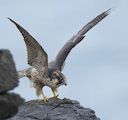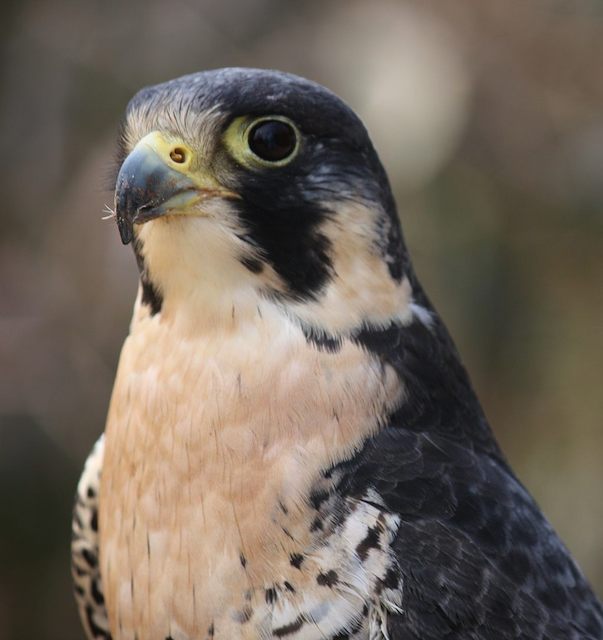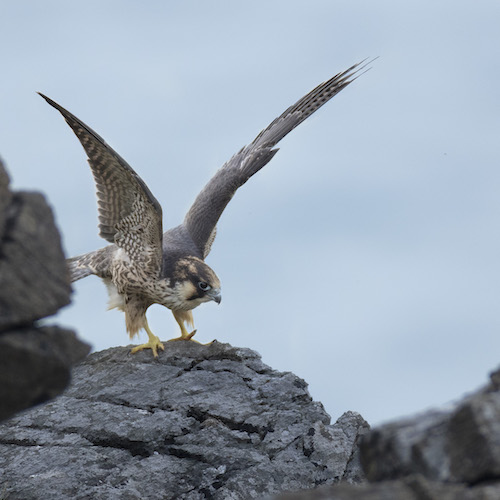 Peregrines can be seen round The Lizard.
Peregrines can be seen round The Lizard.
Photo: © Richard Birchett
Scientific name: Falco peregrinus
Cornish name: Winnard
Other names: Peregrine Falcon
Status: IUCN Red List (Least Concern), listed in CITES, Appendix 1; Schedule 1 species in the UK
 The Peregrine, a large, crow-sized member of the Falconidae family, is found on rocky cliffs of the north and west coasts of Britain. Globally, there are 19 subspecies of this widely distributed bird of prey, which is found on every continent, except for Antarctica. The females, in common with other birds of prey, are larger than the males.
The Peregrine, a large, crow-sized member of the Falconidae family, is found on rocky cliffs of the north and west coasts of Britain. Globally, there are 19 subspecies of this widely distributed bird of prey, which is found on every continent, except for Antarctica. The females, in common with other birds of prey, are larger than the males.
Peregrine means ‘wanderer’, probably deriving from the long migrations southward of northern populations in winter.
Did you know…?
…Peregrines are fast! They can reach speeds of close to 150 miles per hour when diving for prey (called the ‘stoop’).
…They were amongst the birds affected badly by use of DDT in the middle decades of the 20th century: being at the top of their food chain, they accumulated large levels of the chemical. Populations are thought to have recovered since use of DDT was banned, but they remain protected in the UK.
More information and references:
Gooders, J., Harris, A., 1986. Field Guide to the Birds of Britain and Ireland. Kingfisher Books, London.
Published: May 2013 (updated July 2020)
Author: Amanda Scott
Photos: Fledged juvenile (below): © Richard Birchett (website and YouTube channel); adult (head shot; above): Ltshears / CC BY-SA

